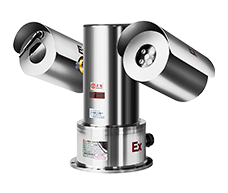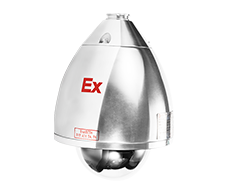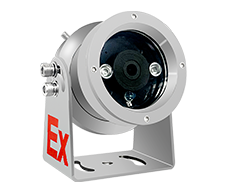Top Security Technology and Innovations in 2014
Date:2013-12-28
http://www.securitymagazine.com/articles/84978
Technology has become ingrained in enterprise security operations.
Like most other segments of the business world, technology has become ingrained in enterprise security operations. With that increased use of technology comes a new set of risks. The challenge is to ‘‘get ahead,’’ to digest all things happening around you and distill them to form a clear course forward. The best way to do this is to examine how the technology will be adopted and how the use of technology will then change the behavior of people. All of which is highly unpredictable.
Sogeti, as a business technology company, has a pragmatic view on technology and the trends that are important. The trends were composed by polling a group of Sogeti experts who in turn based their input on their view of the industry as well as direct conversations with our clients and partners. According to Sogeti, the most important trends for security enterprise executives include:
1. Mobile, Mobile, Everywhere. Anywhere, at Any Time, on Any Device
Mobility is all about being productive whenever and wherever employees need to be, on the device that suits them best. Whether it is a company-provided device or their own, they should be able to get things done, communicate and collaborate securely with people inside and outside their organization, both local and global. That means increased and diligent data security policies for your enterprise.
2. Augmented Reality
Augmented Reality is a live, direct or indirect, view of a physical, real-world environment whose elements are augmented by computer-
generated sensory input such as sound, video, graphics or GPS data – from the ‘‘character marker’’ to the Google Glass. It remains to be seen how this trend will affect surveillance policies.
3. Big Data
The term Big Data stands for awareness and new generation of technologies and architectures designed to economically extract value from large volumes of a wide variety of data, enabling high-velocity capture, discovery and/or analysis. Big Data is not about specific client tools or software, Sogeti says, but rather, managing information data sources, composed by structured, unstructured and new types of data (video, plain text, etc.) and make it available to a broad set of target applications and business intelligence solutions. How can you use Big Data in 2014 to reveal patterns and get ahead of risk?
4. Cloud Computing
By now, everybody has heard of Cloud Computing as a model for enabling convenient, on-demand network access to a pay-per-use shared pool of configurable computing services (e.g., communication services, servers, storage, applications and business services) that can be rapidly provisioned and released with minimal management effort or service provider interaction. The expected adoption of Cloud is enormous, Sogeti says, and a new way of software design will appear: integrate services from different sources into a single application. In addition, the rise of Cloud disaster recovery as a service solution will offer highly available and resilient services to enterprises. Real time analytics, and Big Data will strengthen Cloud usage and storage of data. Cloud for devices will be in charge of “hosting” mobile and machine-to-machine interactions to cope with the increasing volume of data produced by new connected devices.
5. Jericho Style Security
Jericho Style Security is a concept that puts security closer to the information and data (‘‘access to specific data’’). It reduces the sole reliance on peripheral or fence security (‘‘access to the system’’). As a result, it brings a more granular and flexible security approach that frees the business and is better adapted to face the security challenges brought by the age of Cloud Computing, digital collaboration and mobility. New developments like use of Cloud services, mobile devices, Web services or BYOD require new solutions for CSOs to a more balanced risk/freedom approach.
6. Reducing Costs By Improving Quality
Sounds elementary, but according to Sogeti, it’s often lost because of that element. Quality measures across the entire enterprise increase the business value by delivering higher ROI.
A quality focus in all security enterprise phases involving all parties enables projects to reach the expected business objectives. Therefore, testing alone is no longer sufficient to address quality challenges completely. A more complete quality approach across the entire Application Lifecycle is the new approach that can make the difference. Testing or quality are no longer restricted to the test team; they are a shared and business responsibility.
7. 3D Printing
For the past 30 years we have heard of 3D printing, but 2013 was a turning point as this technology is finally becoming accessible. 3D printers produce objects in different materials (plastics, steel, etc.), and they enable people to make or fix their own objects instead of just replacing them when they are broken or outdated. 3D printing also improves companies’ capabilities to control the product lifecycle from its conception to its prototyping and soon to its mass production. Yet, 3D printing brings its own new set of risk management challenges. According to an APreport, a law that banned undetectable firearms expiring in December has caused federal agents to focus attention on guns made entirely out of plastic. 3D industrial printers that can create plastic models and prototypes now can make guns that can’t be picked up by metal detectors.
8. The Internet of Things
The Internet of Things is based on the vision that connecting physical things to the Internet makes possible to access remote sensor data and to control the physical world from a distance. This new capability can dramatically streamline how we secure, manufacture, distribute, manage and recycle our goods. It can also transform the way we perform everyday activities by giving applications current and detailed knowledge about physical events and risk management.
Mapping Out the 2014 Video Surveillance Landscape
When enterprise security professionals look to build their surveillance system, they are looking to future-proof their investment, at least for the next five to 10 years. And in order to do that, it is necessary to predict what the new trends are and whether or not they’ll stick around. Breaking out the crystal ball, however, is not necessary – you just have to study the momentum of the last five years.
According to Jeff Kessler, Managing Director of Institutional Research at Imperial Capital, security leaders should watch for the continued, increased use of managed, hosted video; a continued move toward standardized video equipment; more public-private partnership funding for Safe Cities programs; and the ongoing shift from analog to IP.
“Certain companies are on certain timelines,” says Kessler, “to eliminate the legacy side of the business. We’ve seen a spike, and there will be a fall-off in the sale of encoders, but by 2014, the peak on encoder use will already have been reached.” Over the next few years, there will be less of a need for encoders and more dependence on integrators.
“We need to build up our IT IQ,” remarks Kessler. “End users and integrators will need to be a lot smarter in their ability to understand networks in order to get the most out of them.” He also says that because of the sheer amount of information that comes with network surveillance, there will be increased pressure on IT professionals to ensure they’re prepared for surges of video as incidents occur. Conversely, security leaders have to ensure that their surveillance is not going to overwhelm the entire enterprise’s network.
However, these predictions certainly did not come out of the blue – looking back at the trends of the past five years can be instrumental in determining what’s next.
According to Kessler, the top five trends of the last five years are:
- Improvement in Megapixel Quality: “Over the last five years, we’ve gained a much better idea of what is really needed for certain situations and what is not needed – one to three megapixels seems to be the sweet spot, but that doesn’t mean that the 50- or 100-megapixel options aren’t useful in certain spaces.”
- Standardization Around Practices or Specs: The standards process, such as ONVIF or PSIA, enables more companies to work in the same space, in terms of what functions their cameras offer, Kessler says. This also enables other parts of the security industry (access control, for example) to integrate with surveillance more easily.
- Drastic Improvement at the Edge: The improvement and understanding of what works and what doesn’t at the edge, either for storage or action, is enabling the medium to move forward.
- Surges of Appliances to Integrate Video: This has been a boon for small and mid-sized enterprises – these appliances provide a very good way to integrate the entire security process, which enables the end user to operate and manage the system without complicated know-how.
- Storage Analytics: This has proved to be a major way of increasing ROI and making money, says Kessler. These analytics often provide diagnostic functions that keep surveillance devices operating at their best, and they also provide end users with the most actionable data from their video.
In 2014, Kessler sees the continuation of sequestration playing a large part in government surveillance issues – “A lack of funding for large Department of Defense projects will force a push for more public-private partnership funding for Safe Cities programs, where the local or federal government will match or exceed any private contributions to the project’s fund. Cities would be unable to fund this alone, and a partnership leads to less pushback from the community.”
Managed, hosted video is also not going away anytime soon – Kessler sees a higher demand for four- to five-camera setups for thousands of stores, such as large retail chains. However, a contingent within the security industry believes that this is not a cost-effective way of doing business, and that it will impede absolute growth of small systems. Expect that debate to continue moving forward.
The sophistication of new systems can be intimidating, as “sophisticated”is often considered shorthand for “complicated.”But partnerships between integrators and manufacturers are driving the production of solutions-based surveillance systems tailored to the needs of the entire enterprise, not just the security department.
“The end user isn’t just the security director anymore,” says Kessler. “The system has to be accessible and valuable for IT, the CEO, the CFO, COO, and more. So the manufacturer is providing services, education and sophisticated camera systems, not just the camera but storage, software and analytics, to the integrator, who educates the end user on how to use the system to their best advantage. This partnership from all three parties creates more sophisticated equipment that can be used more easily.”
And for future-proofing, Kessler has a few notions about what the surveillance landscape will look like in 2020:
- There will be very few analog users left, excepting small businesses with no reason or capital to switch.
- You will see vastly improved capabilities to measure the health of the system.
- The overall relationship metrics between frames-per-second, latency, megapixel clarity and other factors will improve dramatically.
- Expect the ability of video to integrate data with other parts of the security system: “Video is the key part of the system that gives you tremendous amounts of data,” Kessler says. “I expect the goal of having integrated, actionable data to be realized by 2020. This is a template for a store owner, for example, to understand where products are and how to make the store more effective.” This could also enable manufacturing companies to improve consistency, audits and investigations.
- There will be a real answer to how much video is stored or used remotely, and how much should be kept on-site.
Expect increasing amounts of video and access in the Cloud as more trust grows in Cloud-based services.











